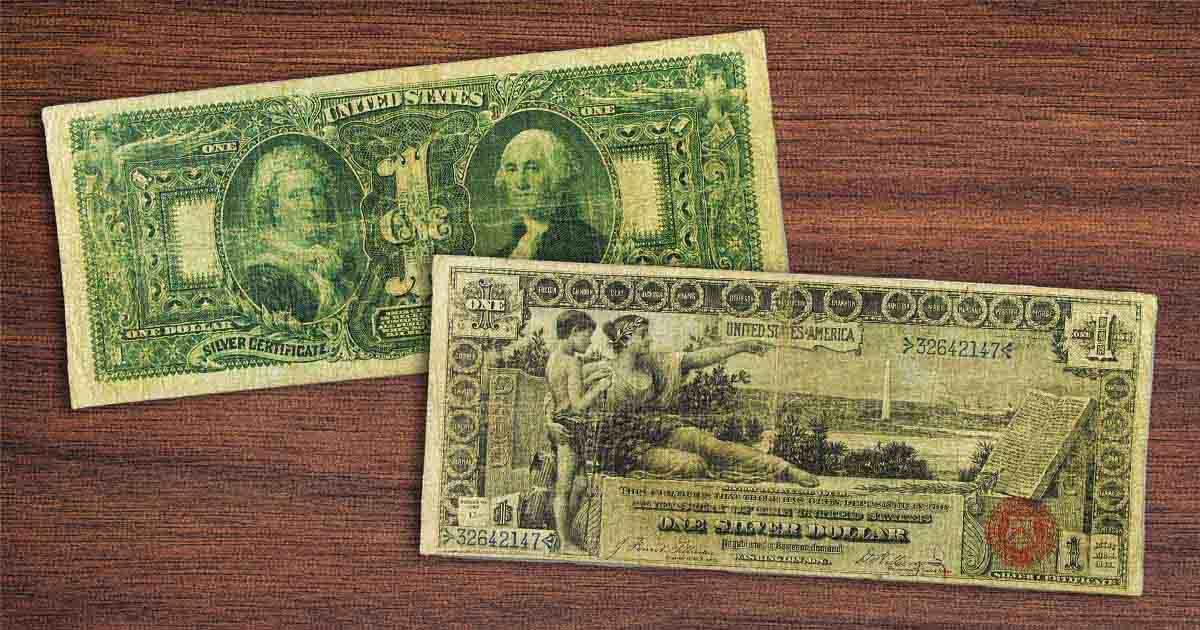
Silver certificates were a kind of representative money that the United States government issued between February 28, 1878 and March of 1964.
Initially, silver certificates were redeemable for silver dollars of equal face value. From June 24, 1967 until June 24, 1968, they were exchangeable for silver bullion. Since 1968, they have retained the status of legal tender, although they can no longer be redeemed for silver.
Representative money is a printed currency exchanged for valuables and goods like silver or gold held by the issuing party. While representative money does not have inherent value, the commodity it represents does have inherent value.
Why were Silver Certificates Issued?
Under free coinage of gold and silver, anyone could deposit gold or silver, which could be coined for a fee to cover costs associated with processing the metal.
The Fourth Coinage Act, or the Mint Act of 1873, entailed a revision of U.S. law as it related to the United States Mint. This act placed the U.S. on a default gold standard through the intentional omission of language providing for the purchase of silver bullion.
It ended the freedom for silver owners to have their silver coined but allowed gold owners to continue coining their gold.
The act was decried by critics as the “Crime of ’73.”
The Gold Standard vs. Silver Coinage
The United States had previously been on a bimetallic standard, and a change to the gold standard did not benefit all Americans equally. Many farmers and coal miners in southern states felt this was unfair.
The debate over free coinage of silver pitted farmers, who would benefit from the higher prices and inflation, against railroads, factories, and businesses that favored deflation and the gold dollar.
The Fourth Coinage Act ended the debate by demonetizing silver. In response, citizens began actively campaigning for silver currency. These citizens wanted the U.S. government to allow the free coinage of silver again.
Their agitation did not lead to free silver coinage but did result in the Bland-Allison Act, which passed, even after a veto by President Rutherford B. Hayes. The Allinson-Bland Act mandated that the Treasury of the United States buy $2-4 million of silver per month from western mining companies to be minted as coins.
Series and Varieties of Silver Certificates
There were five series of silver certificates issued.
The 1878 and 1880 silver certificate series were available in denominations of $10-$1,000.
Series 1886, 1891, and 1908 expanded the denominations of silver certificates by adding $1, $2, and $5 silver certificates. The 1896 silver certificate Education Note series is considered one of the most artistic currencies the United States government has printed.




